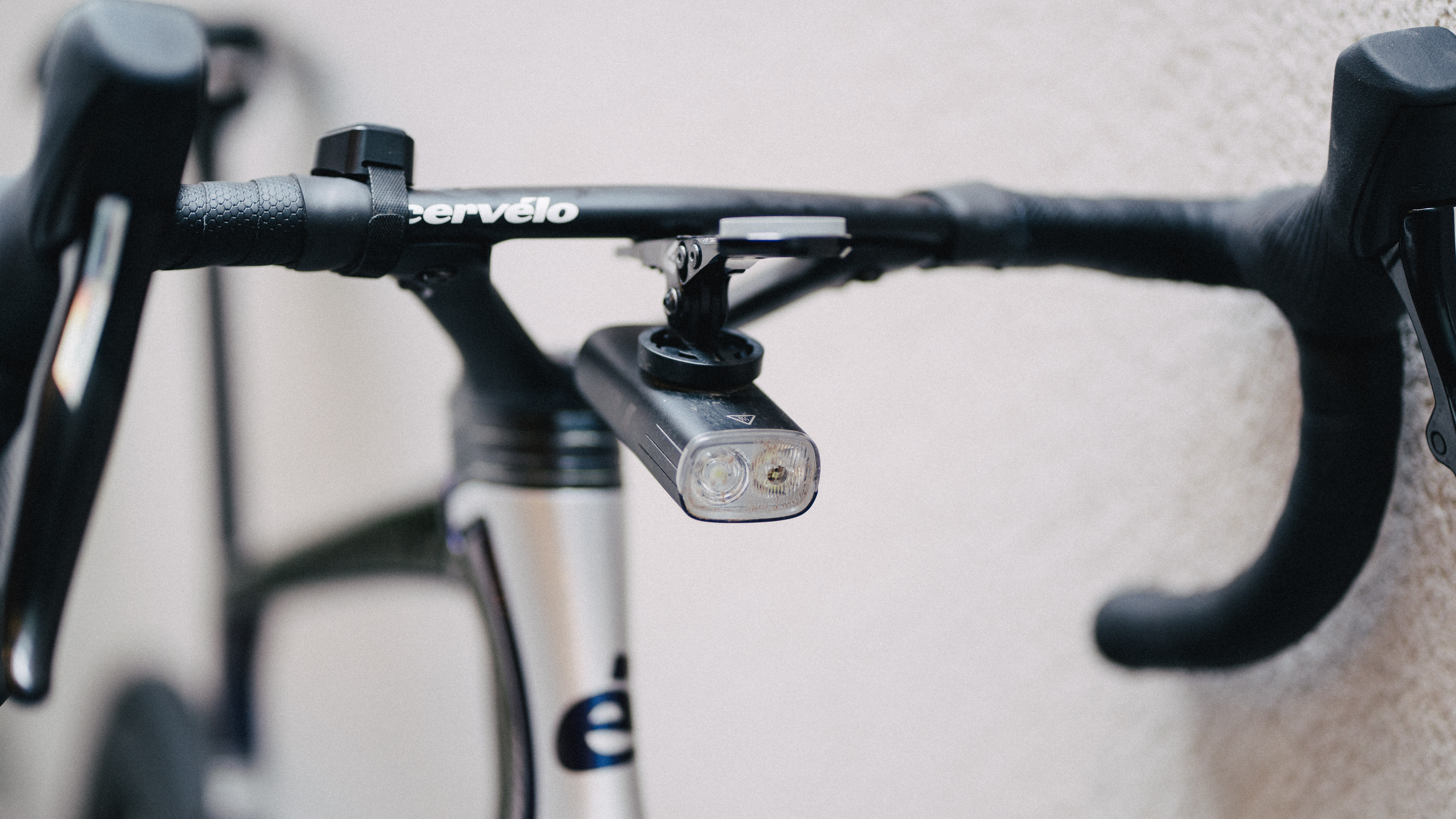
Price: £129.99 / $159.99
Max Lumens: 2600
Weight: 196.3g (without mount and remote)
Battery Life: 1.5-14.5hrs
How is it not March yet? Testing the best bike lights on the market means there’s really no excuse for me to not head out, even when the sun continues to insist on setting at what feels like 3pm. Luckily, in recent weeks I’ve been putting the Magicshine Ray2600B through its paces, mounted up to various different bikes and heading out to see how it performs.
The high level, for those of you unwilling to commit to scrolling further, is that while I quite liked the illumination, and the remote control functionality, the user interface was a little confusing. Even now I still need to Google how to turn the flashing mode on, which isn’t ideal when you’re already late for work, it’s 4ºC and drizzling.
Naturally, there’s more to it than that. It’s a decent light that works well enough to cover both road and gravel duties. Would it be my first choice? Probably not, but for the price - often where Magicshine lights shine, for want of a better phrase - it offers really good value.
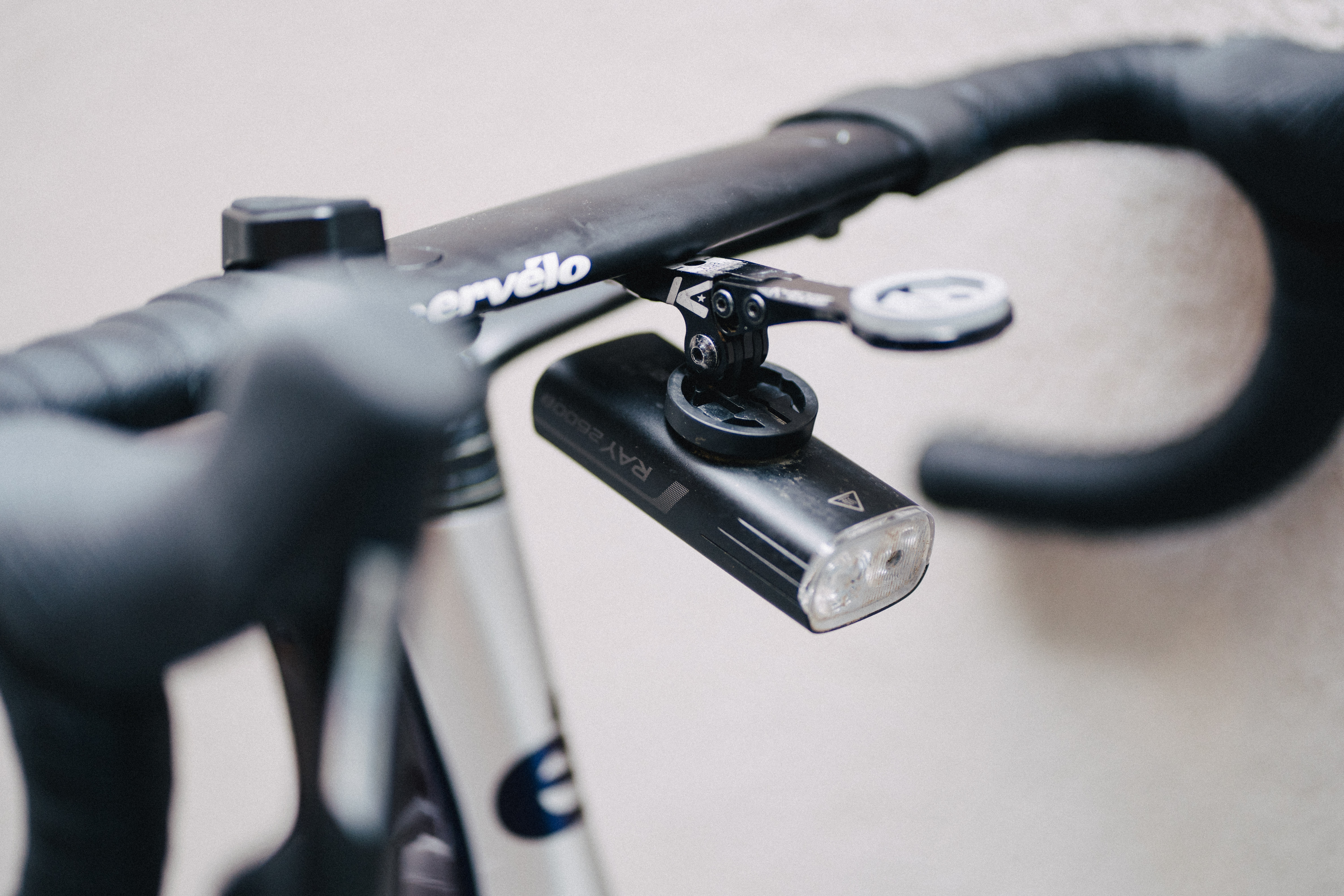
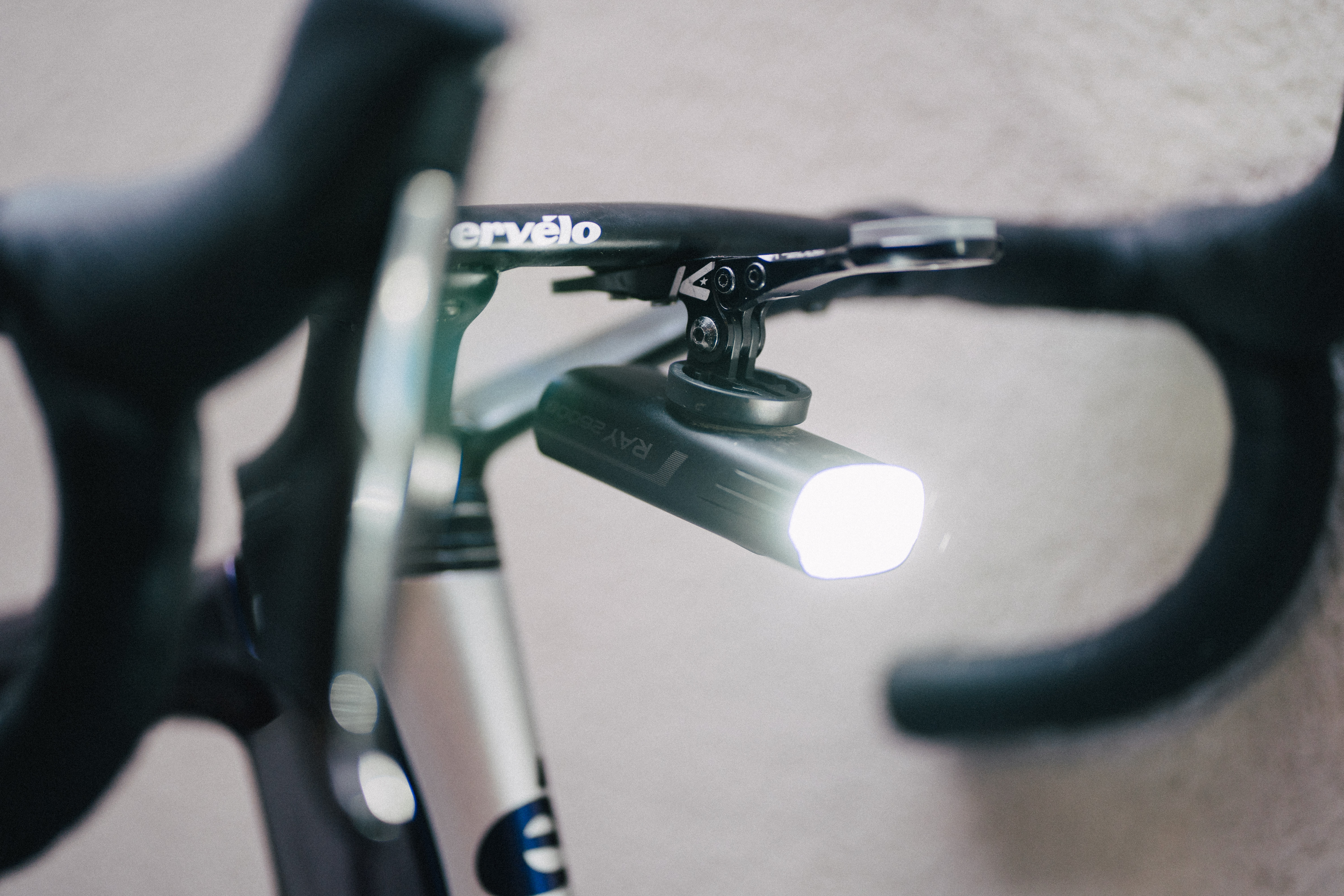
Design and aesthetics
Rare is it that a new bike light offers something other than ‘big tube with bulbs at the front’. The Outbound Lighting Detour mixed it up with ‘big sideways rectangle with bulbs at the front’, and I’ve also been testing the Magicshine Evo1700SD which has gone for ‘medium cube with bulb at the front'. Here though, with the Magicshine Ray 2600B you get ‘big tube with bulbs at the front’.
On the top of the rectangular body are the control switches, which illuminate to show the battery level. There’s an up and a down button, which you can think of simply as brightness controls, but it’s a little more complex than that in use.
On the front there are two LED bulbs with a combined lumen output of 2600, as you probably already guessed from its name. In contrast to lights like the Knog Blinder Pro 600 or 900 where two bulbs are spot beams and two are floodlights with a wider throw, both of the bulbs are effectively a wide throw. The Ray2600B tends to use one of them, drawing on the other as an analogy to a car's full-beam (or high beam if you’re in North America) functionality.
Mounting is taken care of by a Garmin quarter-turn mount, so if for any reason you wanted to run this in a Garmin mount designed for a computer, you could. Likewise, you can use the included light mounts to mount your Garmin bike computer.
Included in the box is a bar mount, which has three different strap options to cope with both round and deeper aero handlebars. The hard plastic of the bracket does mean that it’s very hard to rotate the light away from horizontal. A GoPro style bracket is also included for mounting the light under a bike computer too, as is my preference.
Unlike most bike lights, the Magicshine Ray2600B is pre-dipped, meaning it’s designed to be fitted to the bars totally horizontal (give or take a little bit for personal preference). In practice, this is great and negates the issue on aero bars of not being able to rotate the light around the bars much. However, mount it upside down under a bike computer at a normal angle and the light will be primarily contributing to local light pollution rather than illuminating the road ahead as I found out very swiftly. You can run it upside down, but at a very jaunty angle, so it is best to just have it the right way up.
Handily, if you do sling it beneath your computer, a remote control is included that confusingly doesn’t quite mirror the controls on the light itself. I’ll get into the weeds of this shortly. The remote mounts via a Velcro strap, so you can put it wherever you please. I tended to opt for the top of the bars near the stem, but I’ve seen it in the crook of the bars before. My chosen winter cycling gloves are knitted, so did tend to get snagged on the Velcro, but this is a very niche gripe and could easily be solved with some zip ties.
Finally, on the feature front, the light can be used as a power bank. Just pop a USB-C to USB-C cable in and away you go. It’s a neat feature that, while I never needed to make use of it, could help you out in a bind.
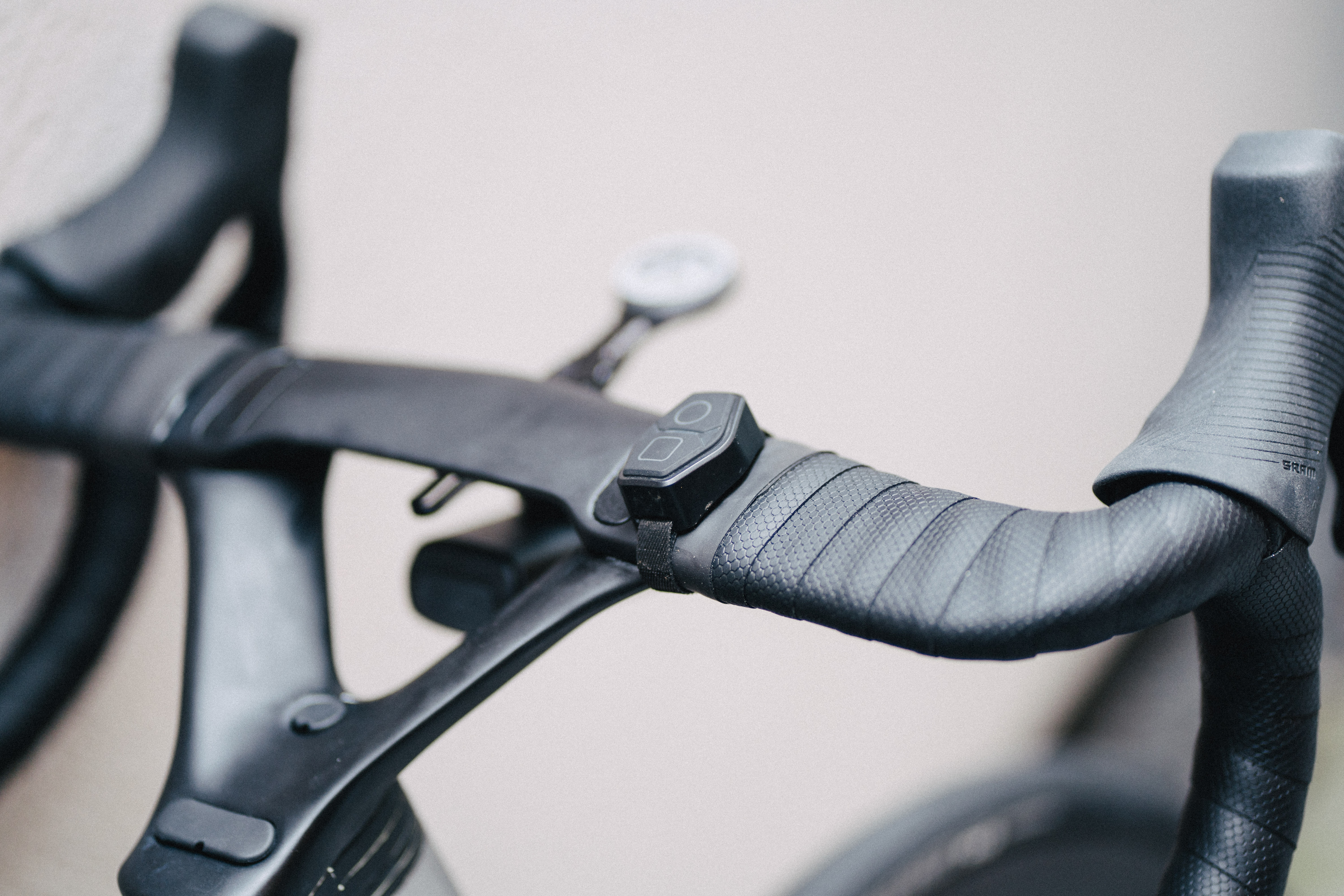
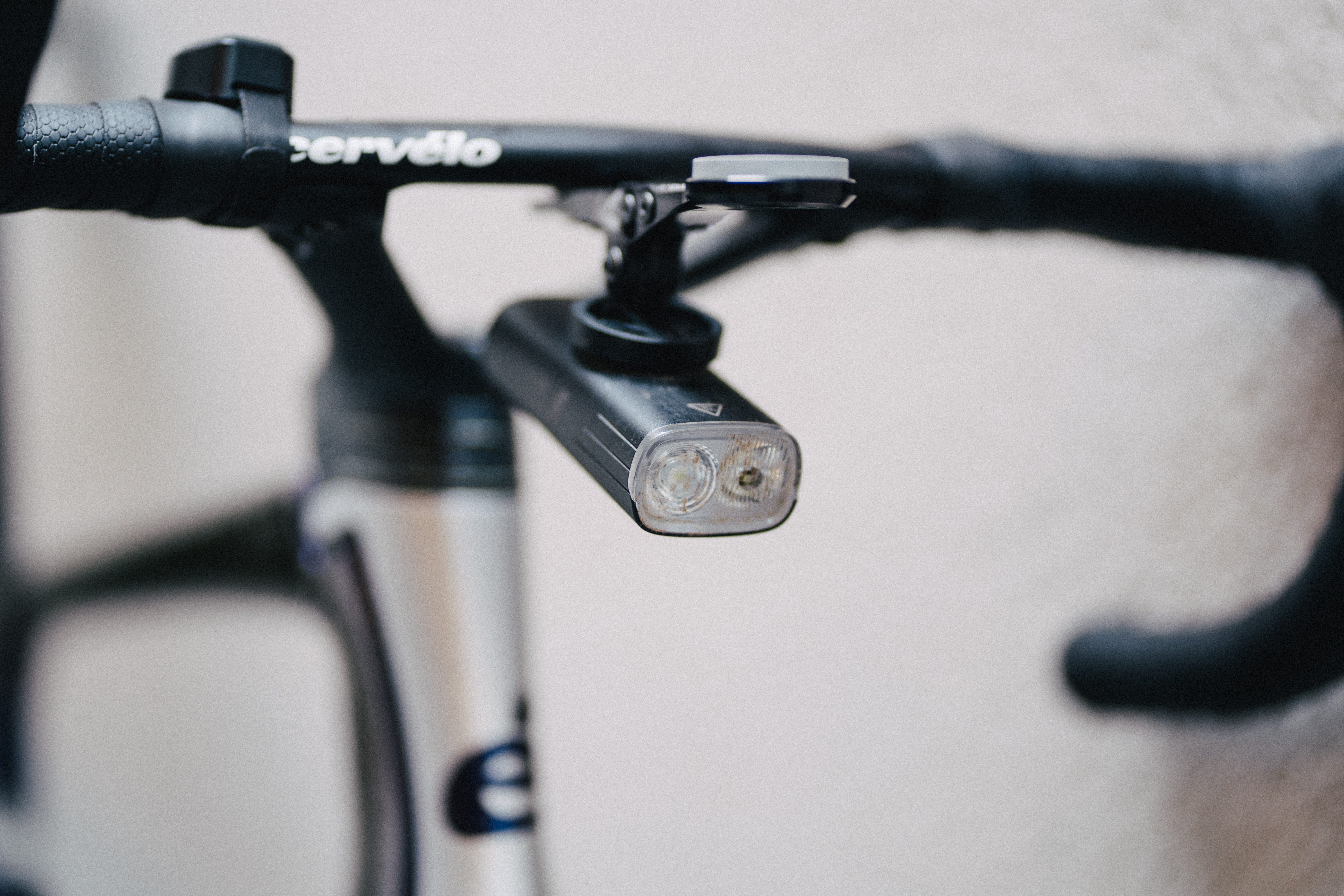
Performance
Once I worked out that the light need to be mounted the right way up for me to be able to see where I’m going, or at least pointed drastically downwards if it was upside down (a bit of an aesthetic crime I must say) I have very little to complain about with regards the illumination. The Magicshine 2600B has perhaps the most mellow cut off of any bike light I’ve used of late, with no real hotspots to speak of. It’s not necessarily my preference - as primarily a roadie I find light spread far and wide a little wasted - but if you are riding off-road as well as on it then I think it makes a lot of sense.
And now, to the control scheme. You’d think having an up and a down button would make life easy but that doesn’t seem to be the case. To switch the light on you hold either of the buttons on the light itself for a few seconds. The down button lowers the brightness, the up raises it - so far so simple, right? If you want to engage the high beam you double tap either button, and once the high beam is engaged you can use the up and down buttons as normal, giving three brightness options at a higher output. Double-tap again to turn it off.
This control scheme isn’t mirrored by the remote though. What looks like up and down buttons you need to think of as ‘square’ and ‘circle’, as it’ll depend which way round you mount the remote. Circle cycles through the brightness modes continuously, while square engages high beam at the highest intensity, and reverts back to the previous setting with another single press. If, however, you engage high beam and then press circle, high beam switches off and you don’t get to cycle through the higher brightness options. If you DOUBLE PRESS circle you engage the high beam and it then stays on, allowing you to cycle the higher output modes, and only another double press of circle turns it back to the normal brightness.
From what I can tell you can’t turn the flash mode on without the remote. In order to turn the flash mode on you need to DOUBLE PRESS square, and double press it again to get the second flashing option. A single press of square will turn the flash off.
In all honesty, this is too complicated for a bike light and makes the user experience rather complicated. The remote is handy, but if the battery dies it shouldn’t remove one of the main features (flash) until a coin cell battery can be sought. In use, I tended to just stick it on medium brightness on the single bulb, and press square when I was descending to enable high beam.
There is supposed app functionality, whereby one can change the modes and brightness settings, which would I imagine make life a little easier to use. Sadly, at the time of testing the Magicshine app isn’t available on the Play Store, and the links on the Magicshine website to download it do not work so I have been unable to play with this part.
There is also smart functionality, automatically brightening the light when entering a tunnel. But this isn’t something I’ve been able to ascertain whether it works or not. In reality auto-brightening/dimming systems like those found on the Exposure Strada are subtle. In any case, a single press of the square button (or was it a double press with one eye shut?) would work just as well if the tunnel you are frequenting proves to be insufficiently illuminated.
Finally, the battery life. Magicshine claims a 1.5-hour life in high mode, which tracks with my experiences. Using it on jaunts after work for a couple of hours, where I used high beam a lot, I did come home with the battery indicator illuminated red, signifying the charge was somewhere between 11-20%. With conservative use of the high beam, I see no reason to doubt the quoted charge times, though naturally, your mileage may vary depending primarily on the ambient temperature.
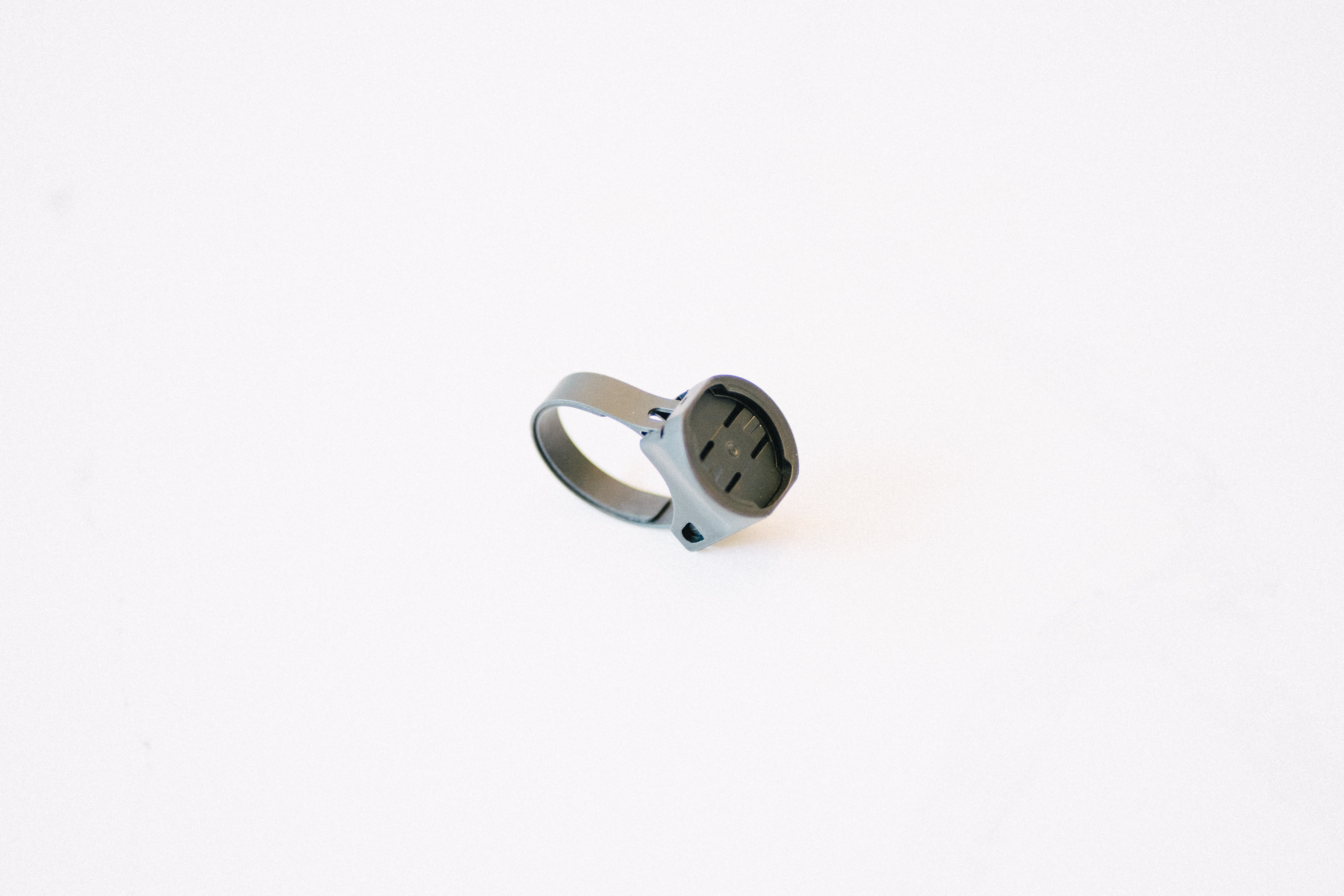
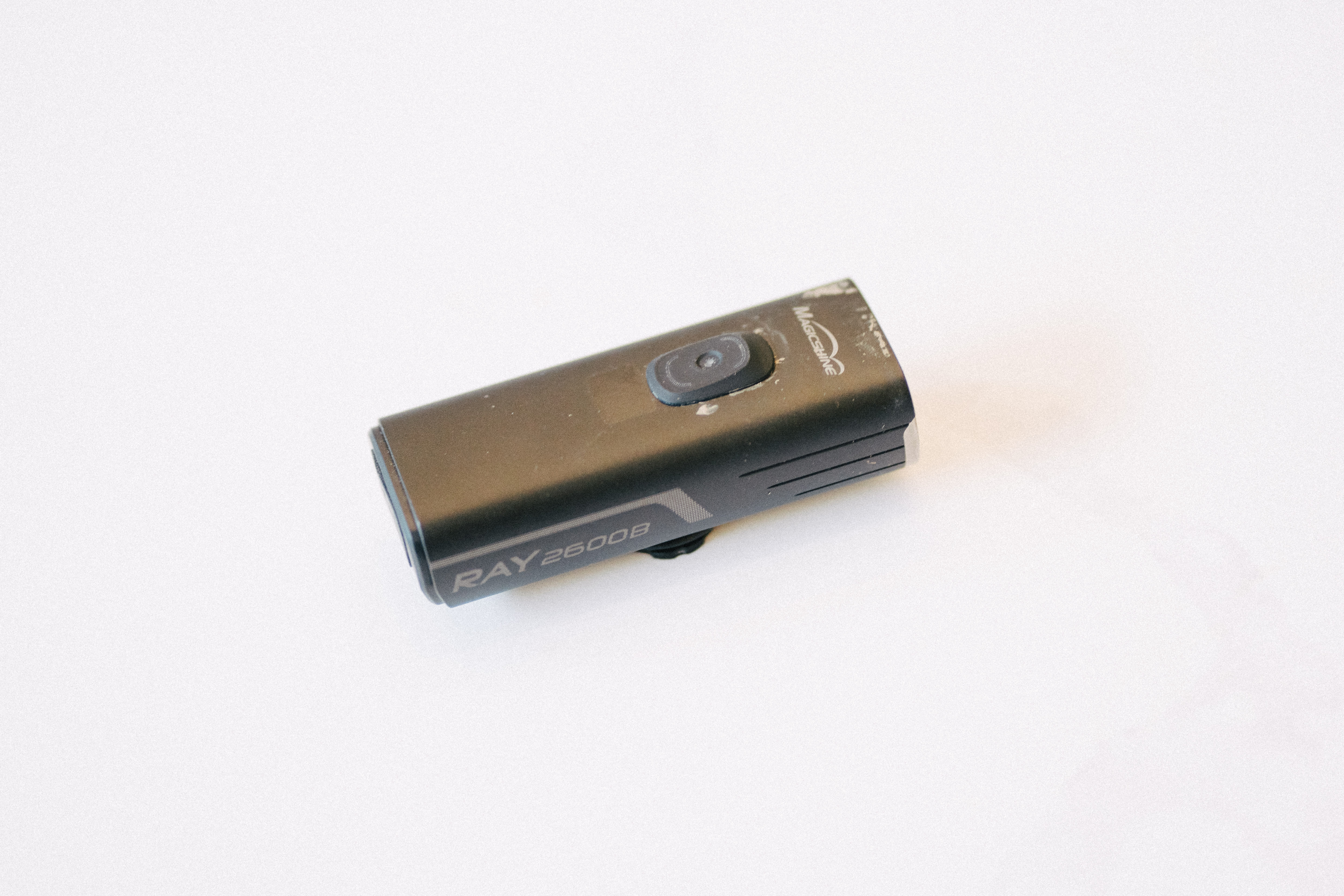
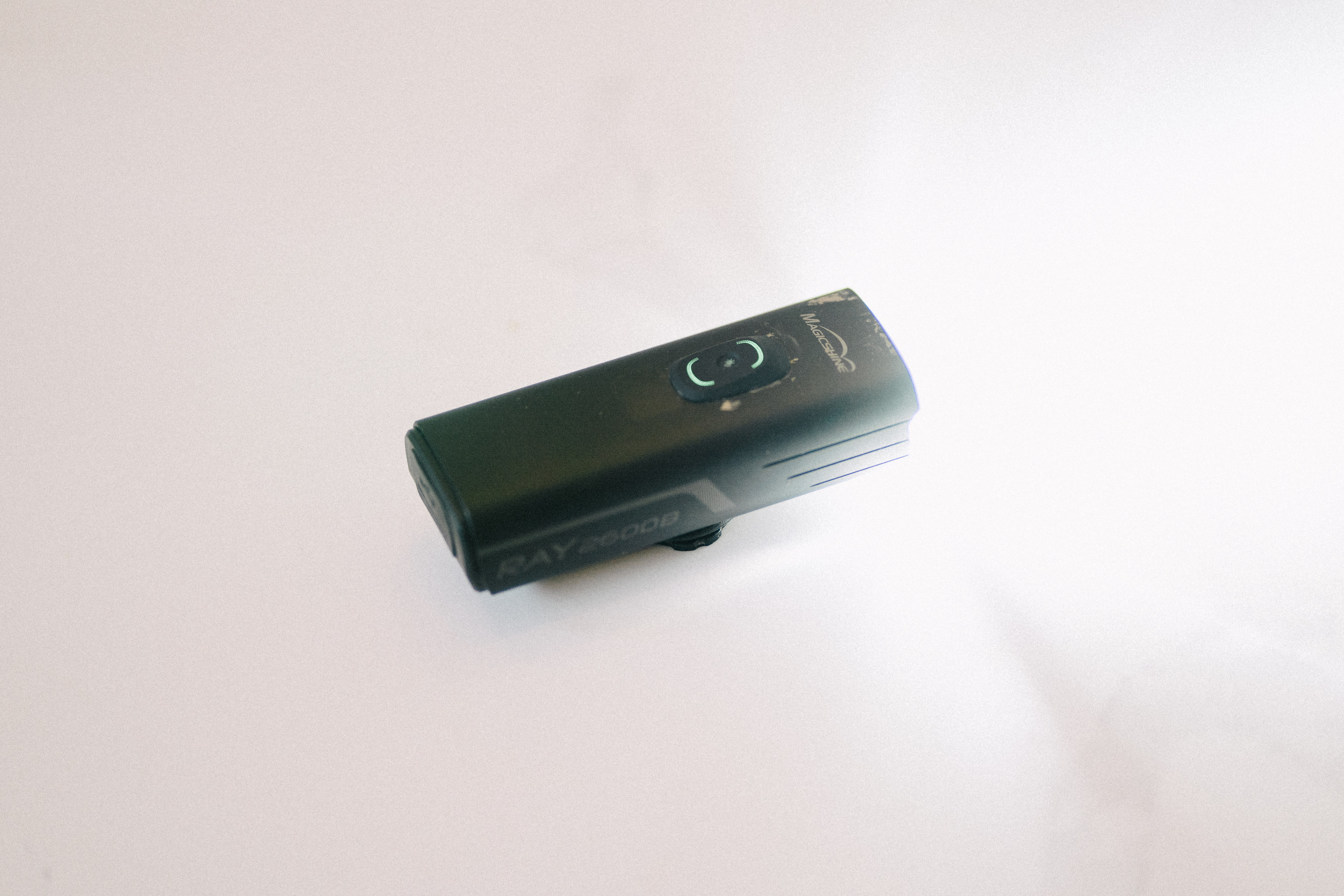
Value
The RRP for the Magicshine Ray2600B is £129.99 / $159.99, which is cheaper than similar brightness options from the likes of Cateye. Value is normally a strong suit for Magicshine, and is one of the reasons the SEEMEE300 rear light is my pick for the best in that particular category.
Here it’s no different, and while it isn’t such blinding value as the SEEMEE300, you do get a lot for your money in terms of power, features (complicated or otherwise) and mounts.
Verdict
The Magicshine Ray2600B is a quality light that’s only really let down by having an overly complicated user interface. The light quality is good, with a beam throw that’s wide enough and smooth enough in transition to make it more than suitable for off-road use as well as on the road. Mounting options are high quality, but those wishing to mount it beneath a computer may not like the angle it has to sit at.
The remote control is handy, but sadly the current lack of app functionality meant I couldn’t tune it to be as useful as I suspect it could be.




!["[T]he First and Fifth Amendments Require ICE to Provide Information About the Whereabouts of a Detained Person"](https://images.inkl.com/s3/publisher/cover/212/reason-cover.png?w=600)


